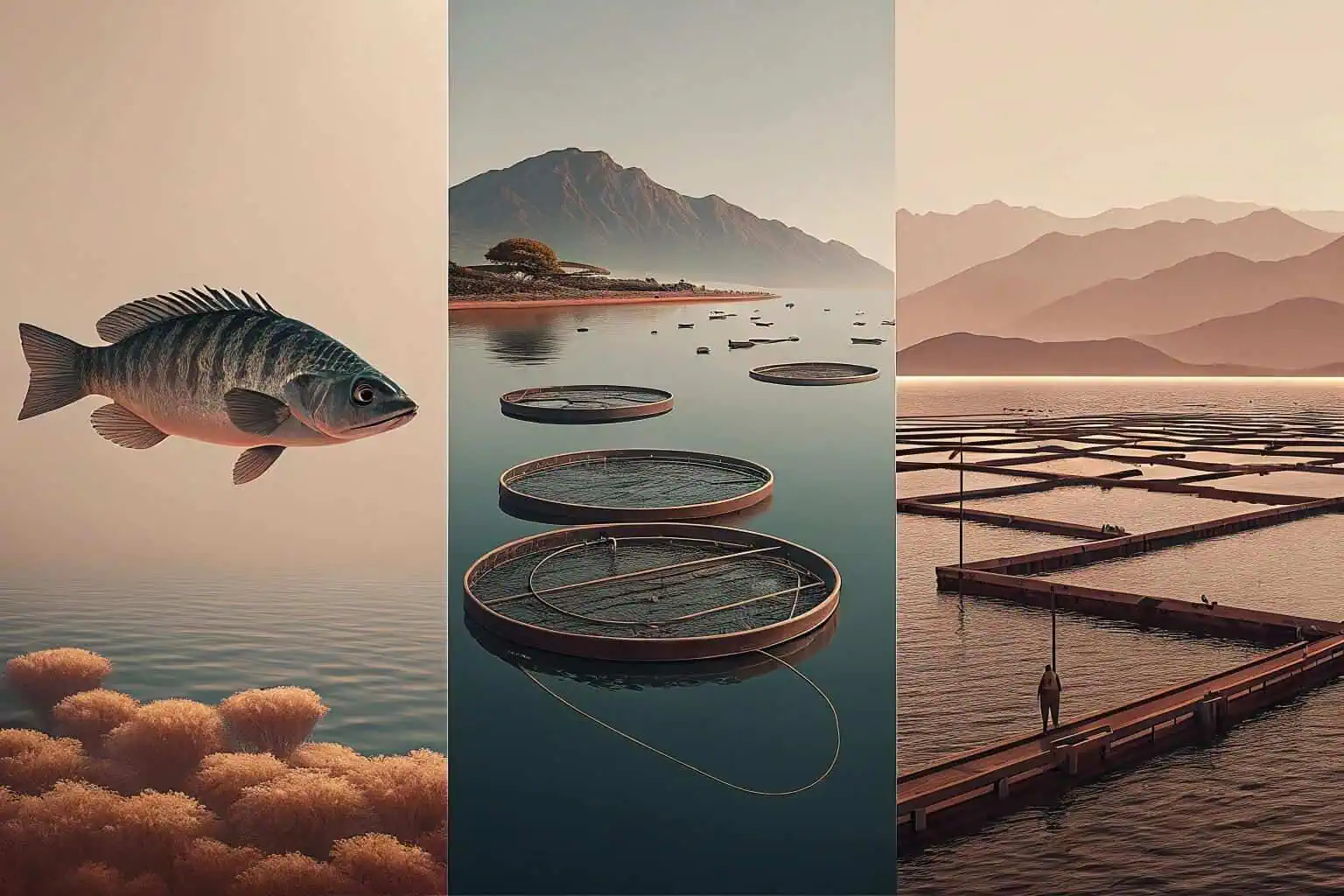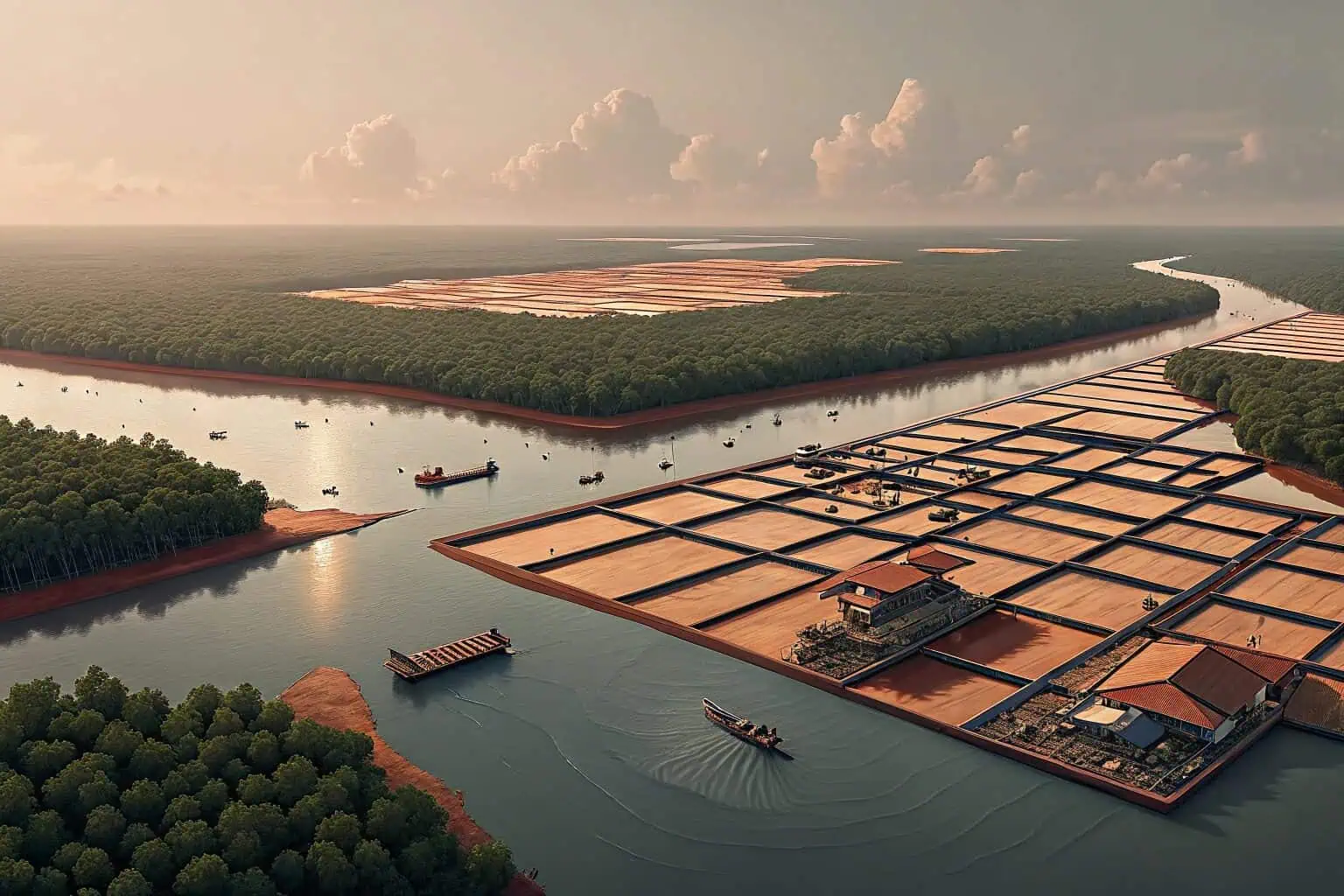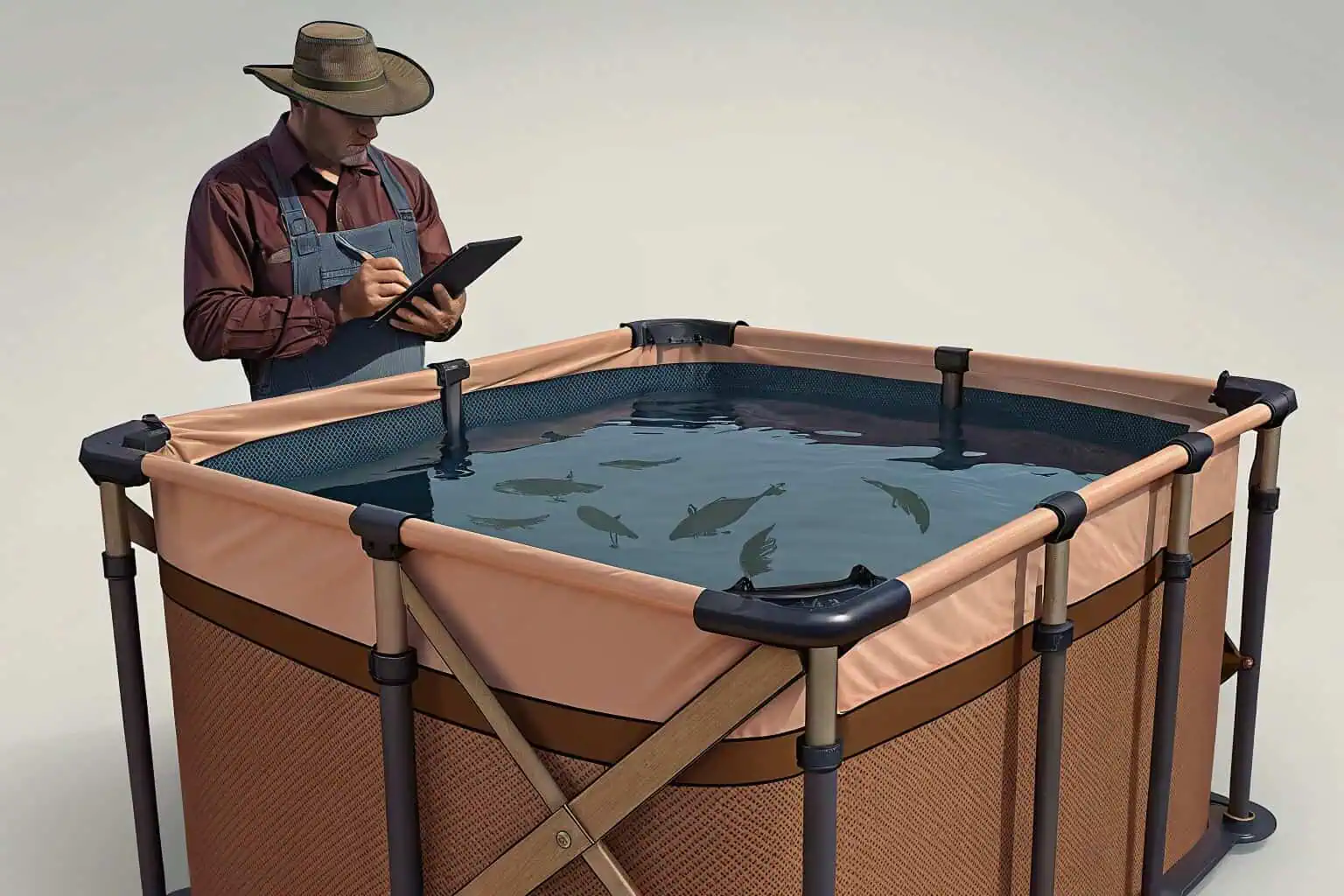What is an example of aquaculture?
Struggling to picture how we farm fish? You're not alone. The world of aquaculture can seem complex, but it's simpler and more vital than you think.
A great example of aquaculture is shrimp farming. Farmers raise shrimp in controlled ponds, managing water quality and feed to produce a consistent, sustainable source of seafood for people worldwide. This method helps meet global demand without overfishing our oceans.

That's just one example, but it opens up a whole world of aquatic farming. As I've watched this industry grow, I've seen how it's changing our food systems for the better. Let's explore more about this fascinating field.
What are the examples of aquaculture?
Wondering what else is farmed in water besides shrimp? The variety is surprising. Let's look at the diverse world of aquatic farming beyond the usual suspects.
Examples of aquaculture include raising salmon in ocean net pens, cultivating oysters on longlines, and growing tilapia in freshwater ponds. Even seaweed is farmed, showing the incredible diversity of products that come from controlled aquatic environments, supporting both food security and local economies.

These examples only scratch the surface of what's possible in aquaculture. To give you a better idea, I'll break down some of the most common and exciting areas of aquatic farming1 I've encountered.
Shellfish and Beyond
When we talk about aquaculture, it's easy to just think of fish. But the industry is much broader. I've worked with clients farming everything from delicate oysters to sturdy catfish. For instance, shellfish farming2, like mussels and clams, is a huge part of the coastal economy in many regions. These bivalves are filter feeders, which means they actively clean the water they live in, improving the local marine ecosystem. This makes shellfish farming one of the most sustainable forms of aquaculture out there. It's a win-win for both the farmer and the environment.
Freshwater Favorites
Then there's the world of freshwater fish. Think of catfish farms in the southern United States or tilapia ponds in Southeast Asia. These are often smaller, family-run businesses that need reliable, easy-to-set-up equipment. That's where I see our Bancy collapsible ponds3 making a real difference. They provide a flexible and durable solution for farmers who need to adapt to changing conditions. For example, a farmer can easily move or expand their operations without the need for costly and permanent construction. This flexibility is crucial for small businesses aiming to grow.
The Rise of Seaweed
It's not just about animals, either. Seaweed and algae farming are booming, providing ingredients for food, cosmetics, and biofuels. This sector is incredibly innovative, finding new uses for aquatic plants every day. For example, certain types of seaweed can be used as a natural fertilizer, reducing the need for chemical inputs in agriculture. It represents a truly circular economy approach, where the output of one industry becomes a valuable input for another.
| Seaweed Type4 | Common Uses | Key Benefits |
|---|---|---|
| Kelp | Food products, soil fertilizer | Rich in iodine and nutrients, improves soil structure |
| Nori | Sushi wraps, snacks | High in protein and vitamins |
| Spirulina | Dietary supplements, smoothies | Excellent source of protein, antioxidants, and B-vitamins |
| Dulse | Food seasoning, snacks | Good source of minerals and has a smoky, bacon-like flavor |
What are the 4 types of aquaculture?
Heard there are different types of aquaculture but don't know what they are? It can be confusing. Let's break down the four main categories simply.
The four main types of aquaculture are mariculture (in the ocean), freshwater aquaculture (in rivers and lakes), brackish water aquaculture (in estuaries), and recirculating aquaculture systems (RAS) which are land-based. Each type has unique methods and species suited to its environment.

Understanding the four types of aquaculture helps to see the industry's full scope. I've seen firsthand how each system presents different challenges and opportunities.
Mariculture: Farming the Sea
Mariculture5 is farming in the sea6, like salmon cages in Norway. It's massive in scale but faces issues with pollution and disease. The open nature of these systems means that waste can spread into the surrounding ocean. There is also the constant risk of storms or predators damaging the enclosures. That's why selecting the right materials for nets and pens is so critical for success.
Freshwater Aquaculture: Inland Opportunities
Freshwater aquaculture7 happens in ponds, rivers, and lakes. It's more accessible for small farmers, which is a big part of our customer base at Bancy. Our galvanized pipe fish tanks8 are perfect for these settings. They offer a sturdy, long-lasting structure that can withstand various weather conditions. This gives farmers peace of mind and allows them to focus on what they do best: raising healthy fish. The controlled environment also makes it easier to manage water quality and prevent disease.
Brackish Water and RAS
Brackish water aquaculture is where freshwater meets saltwater, like in estuaries, ideal for species like shrimp. For me, the most exciting area is Recirculating Aquaculture Systems (RAS)9. These are closed-loop, land-based systems that give farmers complete control over the environment. This reduces the risk of disease and pollution. Our customizable PVC liners10 are essential for these high-tech farms, ensuring a secure and clean environment for the fish. With RAS, you can even raise saltwater fish far from the ocean, opening up new markets and possibilities. It's a game-changer for the industry.
| Type | Environment | Common Species | Bancy's Solution |
|---|---|---|---|
| Mariculture | Ocean, Seas | Salmon, Tuna, Seaweed | Heavy-duty liners for coastal pens |
| Freshwater | Ponds, Rivers, Lakes | Tilapia, Catfish, Trout | Collapsible Fish Tanks, Galvanized Pipe Tanks |
| Brackish Water | Estuaries, Mangroves | Shrimp, Sea Bass | Durable, customizable ponds |
| RAS | Land-based tanks | Barramundi, Salmon | High-quality PVC/TPU liners, full tank systems |
What is an example of aquaculture in AP human geography?
How does fish farming shape human societies? It's a key topic in AP Human Geography. Let's explore how aquaculture connects people, places, and economies.
In AP Human Geography, a great example of aquaculture is the intensive shrimp farming industry in Southeast Asia, like Vietnam. It has transformed rural economies, created jobs, and altered coastal landscapes, showing the deep interplay between human activity, environment, and global food networks.

From a human geography perspective, aquaculture is fascinating. It's not just about food production; it's about how we organize space and resources.
The Cultural Landscape of Aquaculture
I remember visiting a community in Southeast Asia where the entire local economy had shifted from traditional fishing to shrimp farming11. This change brought new income but also new challenges, like managing water quality and land use. It highlights the concept of the "cultural landscape12," where human activities physically shape the environment. You could see the patchwork of shrimp ponds stretching for miles, replacing what was once mangrove forest. This transformation has profound effects on local traditions, social structures, and the environment itself.
European Innovations
In Europe, I've seen a different story. The focus on sustainable, inland fish farming using recirculating systems13 is a response to environmental regulations and consumer demand for eco-friendly products. This shows how cultural values and political frameworks influence agricultural practices. For students, understanding these connections is key. It's why we at Bancy focus on providing adaptable solutions, like our easy-to-install plastic fish tanks14, that can fit into diverse cultural and economic contexts, from a small farm in America to a community project in Africa. These systems often integrate advanced technology for water filtration and waste management, showcasing a commitment to minimizing environmental impact while maximizing efficiency.
| Feature | Traditional European Aquaculture | Modern RAS in Europe |
|---|---|---|
| Location | Coastal areas, open water | Inland, land-based facilities |
| Water Use | High, flow-through systems | Low, water is recycled and reused |
| Environmental Impact | Risk of pollution and disease spread | Minimal, contained system with waste treatment |
| Control | Limited, exposed to external factors | High, controlled environment for optimal growth |
| Bancy's Role | Liners for traditional ponds | Custom PVC/TPU liners for RAS tanks |
What is the definition of aquaculture and examples?
Need a simple, clear definition of aquaculture? It's often wrapped in technical jargon. Let's define it clearly and look at real-world examples.
Aquaculture is the controlled farming of aquatic organisms like fish, shellfish, and seaweed. It's essentially agriculture in water. Examples range from large-scale salmon farms in ocean pens to small, family-owned tilapia ponds, all aimed at producing food and other products sustainably.

So, aquaculture is farming in water. But to me, it's much more than that.
A Proactive Solution
It's a proactive solution to a global problem: feeding a growing population without destroying our oceans. Traditional fishing is reaching its limits. Aquaculture15 allows us to produce protein efficiently and, when done right, sustainably. By farming fish, we can reduce the pressure on wild stocks, many of which are overfished and in danger of collapse16. This approach gives us a measure of control over the food supply that we simply don't have with wild-caught fish.
Innovation is Key
I've seen the industry evolve from its early days. The focus is now on innovation. For example, our double-welded seams on Bancy's flexible tanks17 prevent leaks and ensure longevity, which is a huge concern for farmers. We also offer customization in material thickness (from 0.7mm to 1.5mm PVC/TPU)18, which is critical. A farmer raising trout in a temperate climate has different needs than one raising shrimp in the tropics. This level of detail is what separates successful farms from struggling ones. It's about providing not just a product, but a complete, reliable solution that gives farmers confidence. This includes everything from the initial design to ongoing support, ensuring the farm operates smoothly and profitably.
| Bancy Innovation | Feature | Benefit to Farmer |
|---|---|---|
| Double-Welded Seams19 | Advanced heat-sealing technology | Prevents leaks, ensures tank longevity and reduces water loss |
| Custom Material Thickness20 | PVC/TPU options from 0.7mm to 1.5mm | Tailored durability for different climates and species, optimizing cost |
| Full Solution Provider | From design to after-sales support | Peace of mind, reliable operations, and a partner for growth |
Conclusion
In short, aquaculture is a diverse and vital industry. From simple ponds to high-tech systems, it's key to our future food security and a more sustainable planet.
-
This resource will highlight the advantages of aquatic farming, showcasing its potential for sustainable food production and environmental benefits. ↩
-
Explore the benefits of shellfish farming, a sustainable practice that enhances marine ecosystems while providing economic opportunities. ↩
-
Learn how collapsible ponds can revolutionize fish farming by providing flexibility and cost-effectiveness for small businesses. ↩
-
Understanding seaweed varieties can help you explore their diverse applications in food, cosmetics, and biofuels. ↩
-
Explore this resource to learn how sustainable mariculture practices can minimize environmental impact and improve farm success. ↩
-
Discover effective techniques and strategies for successful sea farming to enhance productivity and sustainability. ↩
-
Explore this resource to learn effective techniques for sustainable freshwater aquaculture, ensuring healthy fish and optimal yields. ↩
-
Discover how galvanized pipe fish tanks provide durability and weather resistance, making them ideal for small farmers in various environments. ↩
-
Explore this resource to understand how RAS can revolutionize fish farming with environmental control and market expansion. ↩
-
Learn how customizable PVC liners ensure a secure, clean environment, essential for high-tech aquaculture farms. ↩
-
Learn about the ecological effects and sustainability challenges of shrimp farming in coastal regions. ↩
-
Explore this resource to understand how human activities like shrimp farming transform environments and influence local cultures. ↩
-
Explore this resource to understand how recirculating systems improve efficiency and reduce environmental impact in aquaculture. ↩
-
Learn how plastic fish tanks provide flexible, easy-to-install options for diverse cultural and economic contexts in fish farming. ↩
-
Explore this resource to learn how sustainable aquaculture can help feed the growing population while protecting our oceans. ↩
-
Discover how aquaculture can reduce pressure on wild fish stocks and promote marine conservation. ↩
-
Explore this resource to understand how double-welded seams enhance durability and prevent leaks, ensuring long-term reliability for agricultural tanks. ↩
-
Learn how tailored material options can meet specific needs of various aquaculture environments, improving farm efficiency and success. ↩
-
Learn how advanced heat-sealing technology enhances tank durability and prevents leaks, ensuring long-term water conservation. ↩
-
Discover how tailored PVC/TPU options can optimize durability and cost-efficiency for various climates and needs. ↩